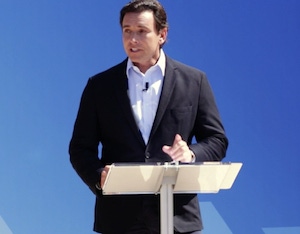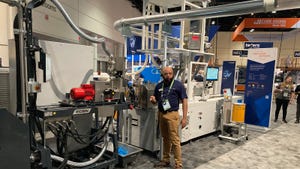Ford to shift all U.S. small-car production to Mexico
September 16, 2016

Ford Motor Co. (Dearborn, MI) CEO Mark Fields told investors in a Sept. 13 conference call that the company “plans to eventually shift all North American small-car production from the United States to Mexico . . . even though the company’s production investments in Mexico have become a lightning rod for controversy in the presidential election,” according to a news report in the Detroit Free Press by reporters Greg Gardner and Brent Snavely.
Fields is quoted telling investors at the daylong conference in Dearborn, “Over the next two to three years, we will have migrated all of our small-car production to Mexico and out of the United States.”
|
Ford CEO Mark Fields |
Reports of Ford as well as the other U.S.-based automotive OEMs continuing to invest heavily in Mexico have been widespread over the past year. In April, Ford announced a $1.6 billion investment in a new plant in Mexico—and the creation of 2,800 jobs—to build small cars in that country. “The industry has known for decades that domestic manufacturers struggle to make a profit on small cars in the U.S.,” said the Detroit Free Press article. (PlasticsToday covered this, as well, in April: "Reshoring talk takes back seat, as auto industry continues to expand operations in Mexico.")
While there has continued to be some significant investment in the United States by the Detroit OEMs, it would appear that those companies are struggling to find their equilibrium. Ford announced in 2015 plans to move production of the Focus and C-Max hybrids from a plant in Wayne, MI, to Mexico, just five years after the company spent “$550 million to convert the aging plant from a big SUV factory to one that could build the efficient Focus compact car,” noted the Free Press article.
The announced move raised the ire of Republican presidential candidate Donald Trump, who shouted from the podium that “we shouldn’t allow it to happen.” He also mistakenly said that Ford was moving all its production to Mexico and was firing all of its employees. That raised the hackles of Mark Fields, who, on a nightly news show on Sept. 15, told Trump just how wrong he was about that.
The Free Press article said, “Ford has said it continues to invest heavily in its U.S. plants and isn’t cutting jobs here,” noting that a year ago the company announced a$9 billion investment in U.S. plants and [would] create or retain more than 8,500 jobs as part of a new four-year contract with the UAW. Of that, $4.8 billion goes to 11 facilities in Michigan.”
In May 2015, my blog looked at the “olive branch” that General Motors held out to the UAW with its commitment to invest $54 billion on U.S. factories to maintain production jobs.
Everyone who watches the booming automotive manufacturing industry in Mexico knows that not much can stop that train. Check out the publication MexicoNOW and its automotive feature, which comes out in the March/April issue each year. This year’s headline reads, “Mexico’s Auto Industry Roars,” and the article features statistics on all the major OEMs and their Tier 1 suppliers.
The Free Press article noted that “UAW President Dennis Williams also has repeatedly blasted Ford and other automakers for investing so much money in Mexico.”
But investments in Mexico by Ford and others didn’t just happen overnight. They’ve been there building vehicles for many years. I toured the Ford Carplastic plant in Monterrey, Mexico, back in the 1990s, and that plant had been there for about 20 years at that time. I watched them mold a full instrument panel in a 3,000-ton press. I’ve also toured other plants including a Delphi facility in Juarez and other Tier 1 suppliers along the border over the years I’ve covered the automotive industry.
Many of the automotive manufacturing plants—both for the OEMs and Tier 1s—are new, technologically state-of-the-art and filled with young, eager workers who’ve been trained at some of Mexico’s best technical colleges. That’s one huge advantage that Mexico has over the U.S. workforce, where baby boomers are retiring and the millennials are not so eager to enter manufacturing and don’t have the skills manufacturers require.
While investment in U.S. manufacturing facilities is holding up, we shouldn’t be surprised if more manufacturers go to Mexico for the many benefits—not just lower cost labor—that Mexico has to offer.
About the Author(s)
You May Also Like




